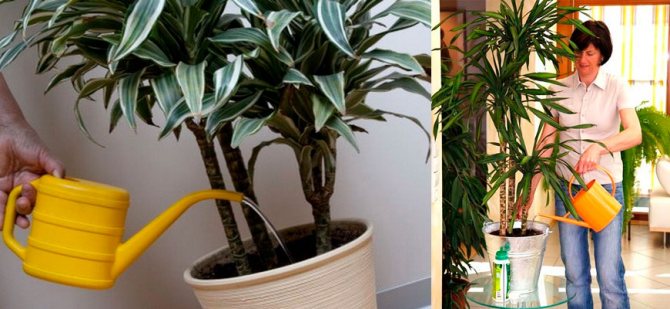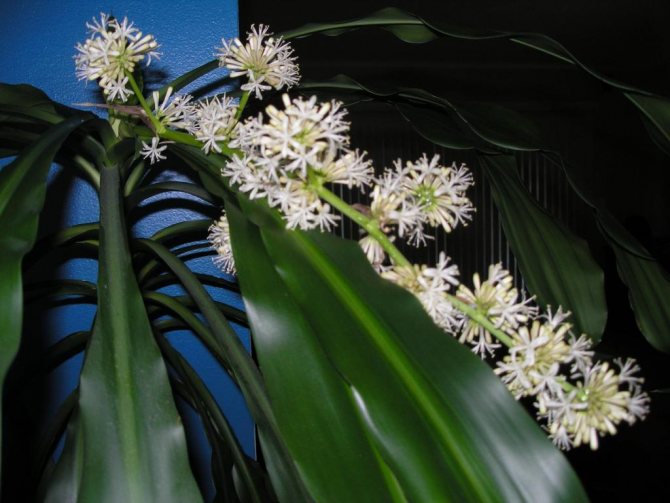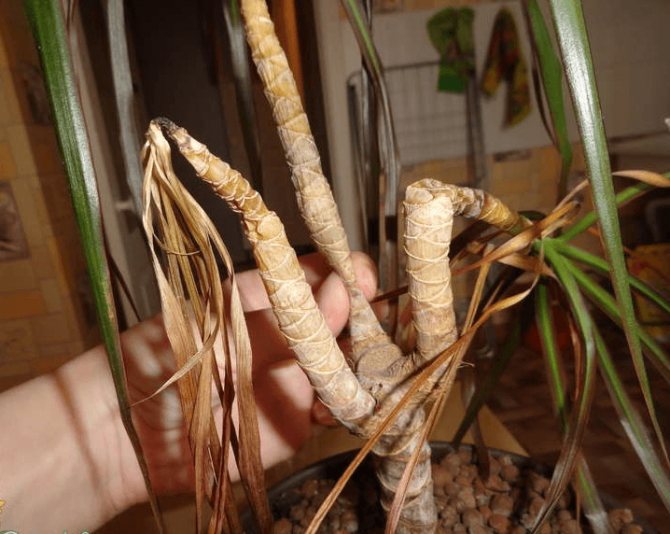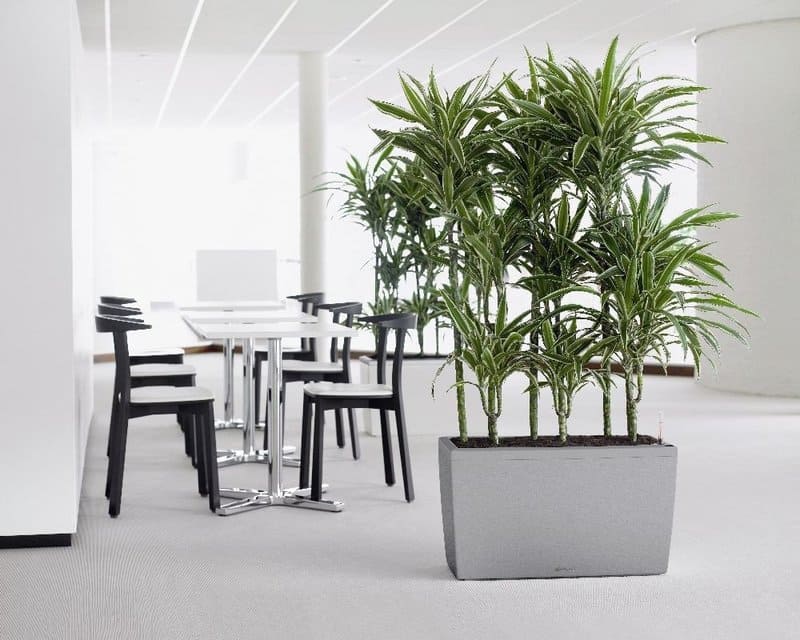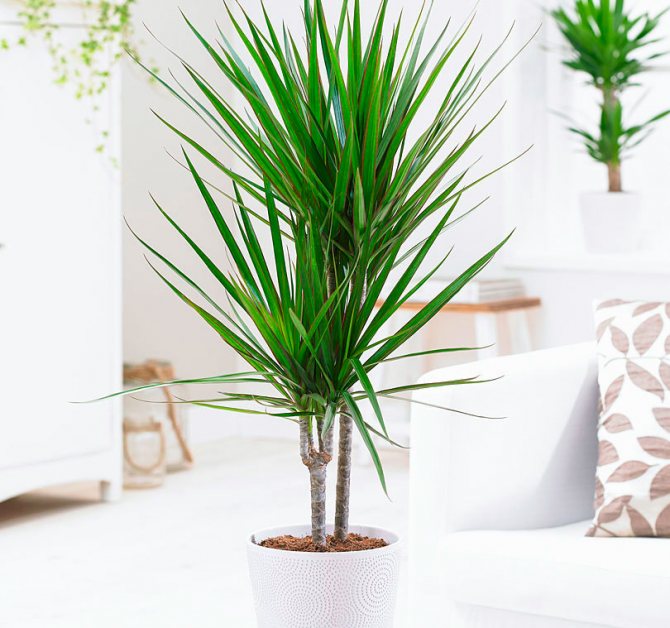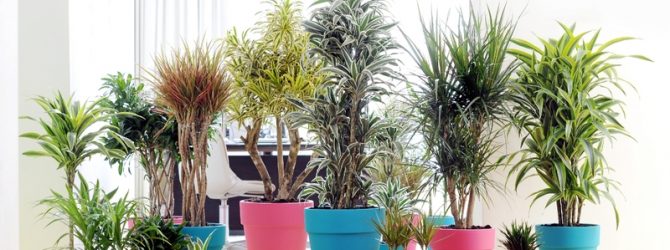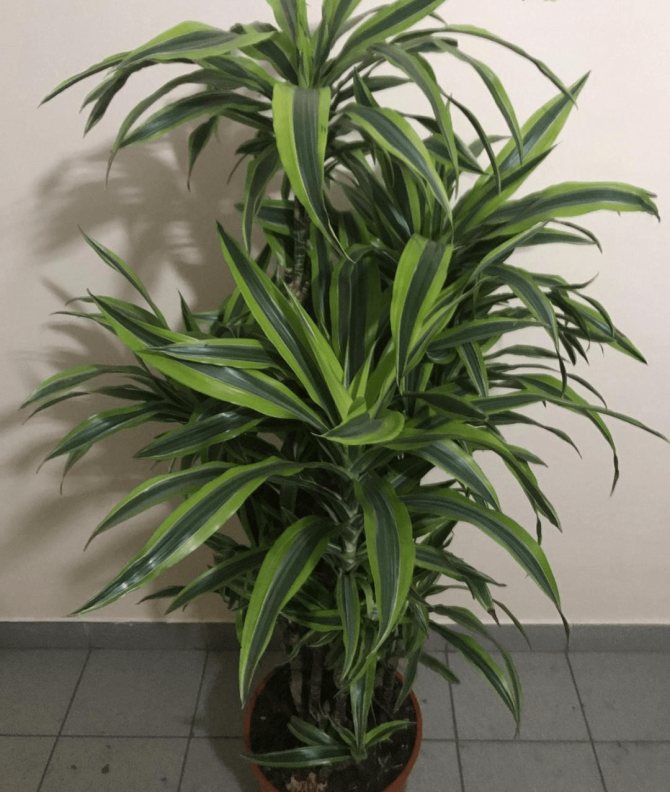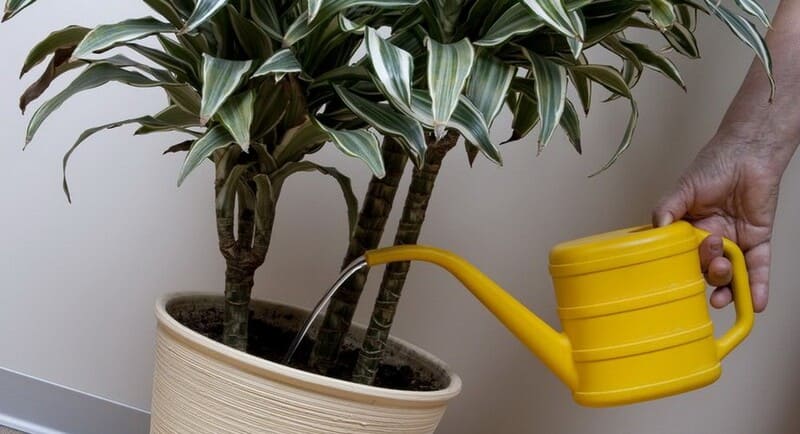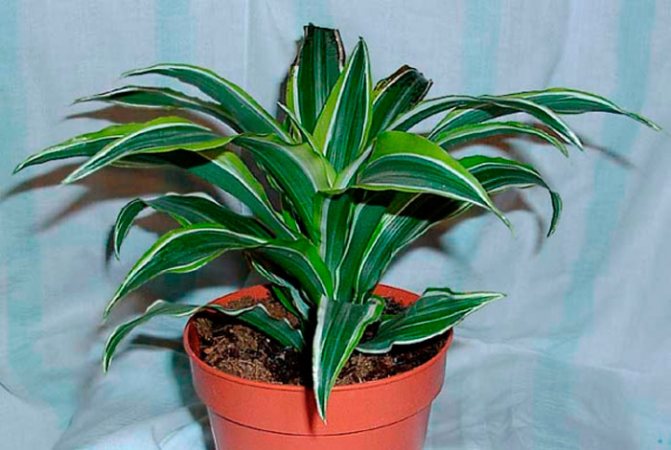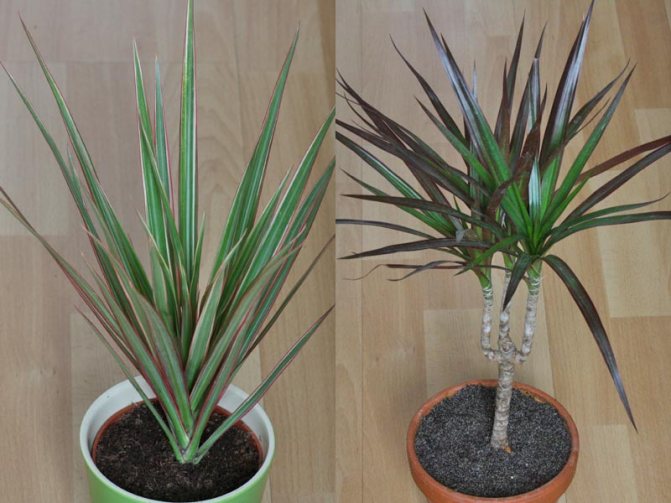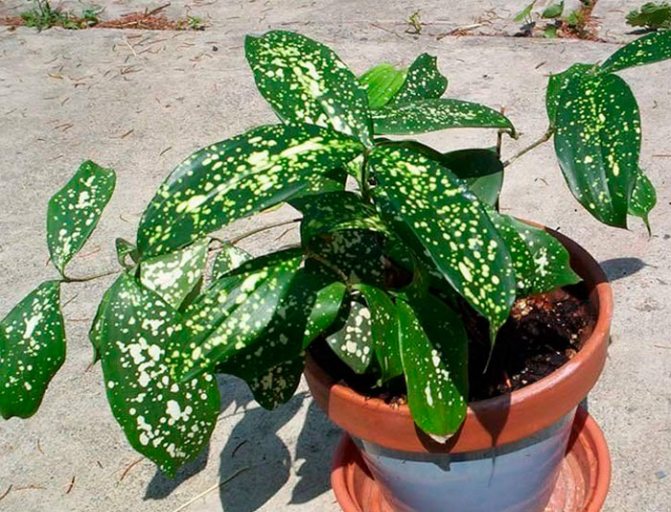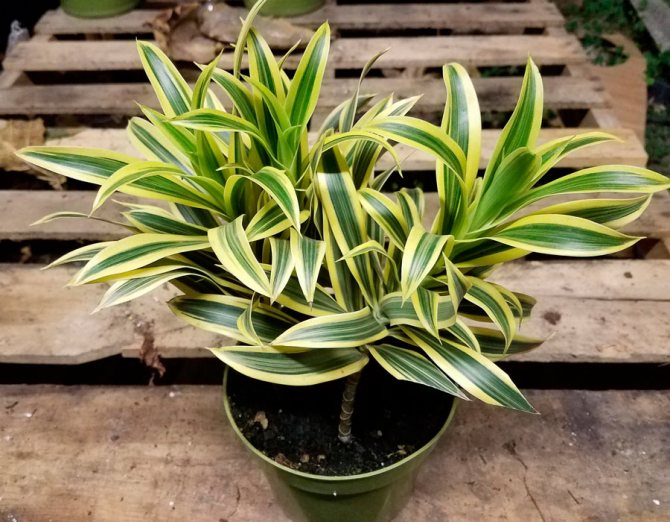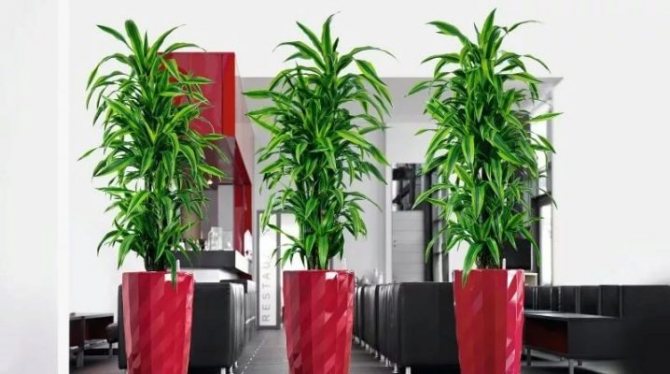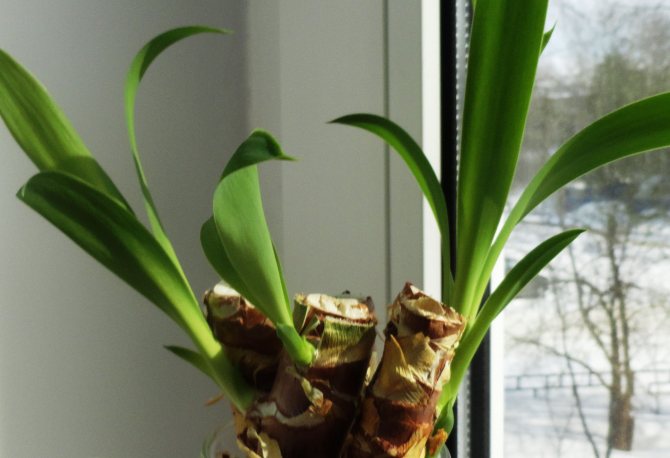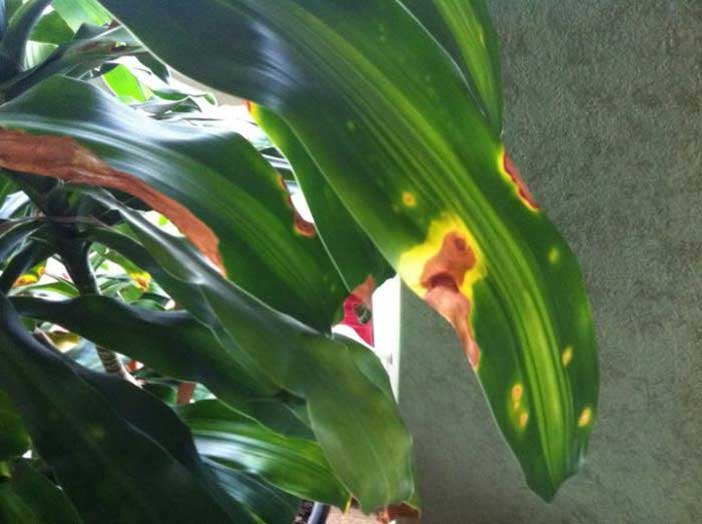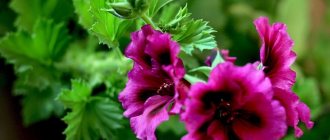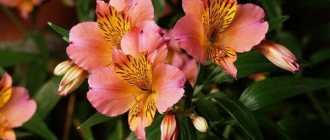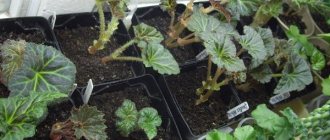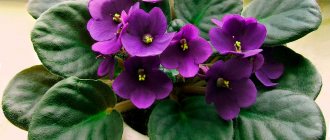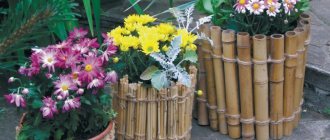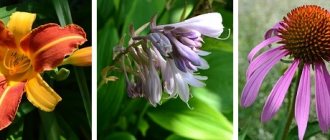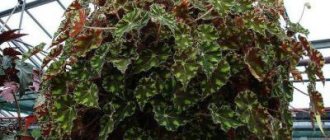Dracaena came to us from the shores of Africa and is considered a plant of the humid tropics. This genus has up to 150 species of flowers, and they are all represented as trees and shrubs. Many of them grow in Africa, but some grow in South Asia and only one in the American tropics. Wild Dracaena is a tall tree, the height of which can reach 20 meters.
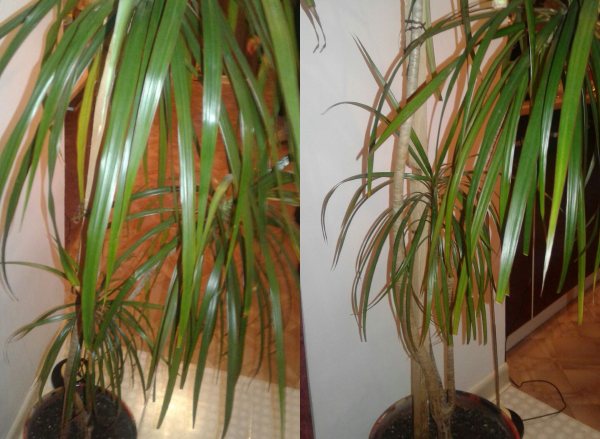
In cultural breeding, the domestic Dracaena is much smaller in size than its relatives living in the wild. Its average height is 50 cm, but some species grow up to several meters.
Dracaena has many green leaves with a gray tint and they all have an elongated shape, the length of which can reach 50 cm and the width up to 5 cm.
In home cultivation, there are several types of Dracen, less whimsical than, for example, the Ficus Benjamin flower.
Some of the most popular Dracaena in home breeding are presented below:
Dracaena Sander - does not tolerate drafts at all. At low temperatures, the leaves can curl, softness and brownish color appear. This Dracena should be kept away from cold windows in winter, as the cold temperature will ruin your flower. This plant has green oval leaves with small golden spots and looks like a bush overall.
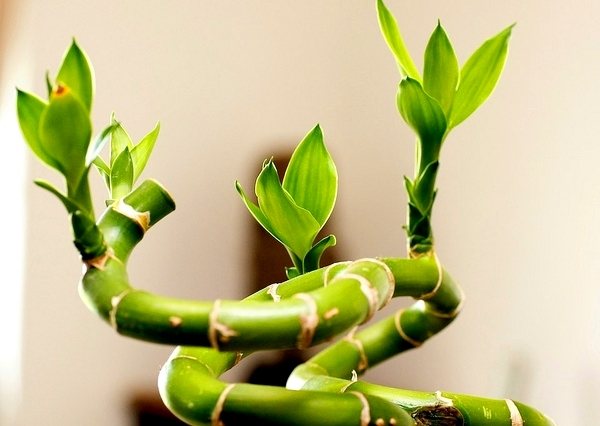

Dracaena Godsef Is a small shrub with green oval leaves, on which cream spots are located, which is its distinctive feature. This type of Dracaena is more hardy than the previous one. In the wild, Dracaena Godsef emits a wonderful scent of flowers, but at home, unfortunately, the flowering of this plant is a very rare case. This happens once every 10 years, or even less often.
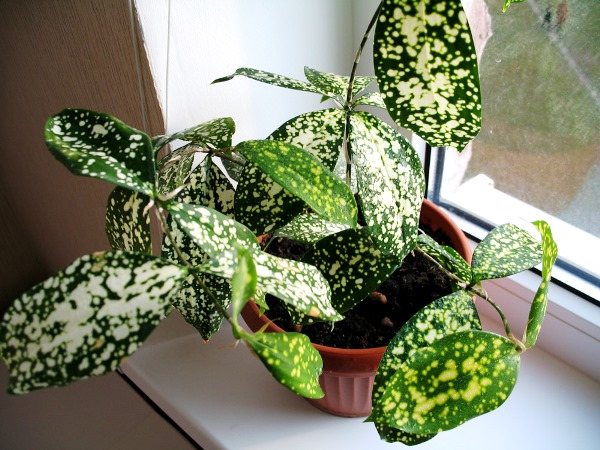

Dracaena Golden quite different from the previous species, since it is an erect flower. Its stems are covered with wide pointed ovoid leaves of a yellowish-green color, also decorated with long silvery stripes, thanks to which this type of Dracaena is popularly called a zebra.
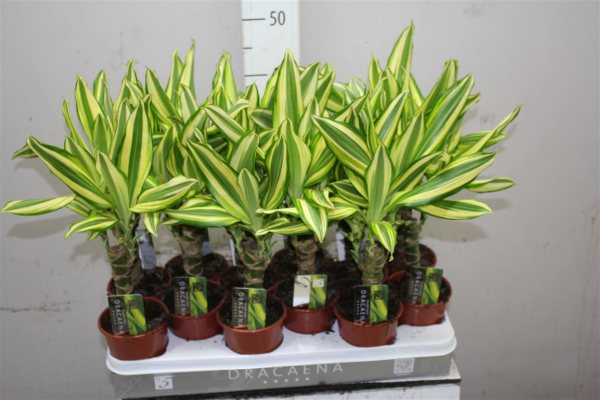

Dracaena Marginata "Bordered" is a tree that can reach up to 3 meters in height. The stem of the tree is serpentine. Leaves up to 15 cm long, located on the stem cap and have a green color with red edges, and their shape is narrow and curved. Unfortunately, over time, they fall off and leave scars on the trunk. However, this Dracena is often chosen precisely because of its enormous endurance.
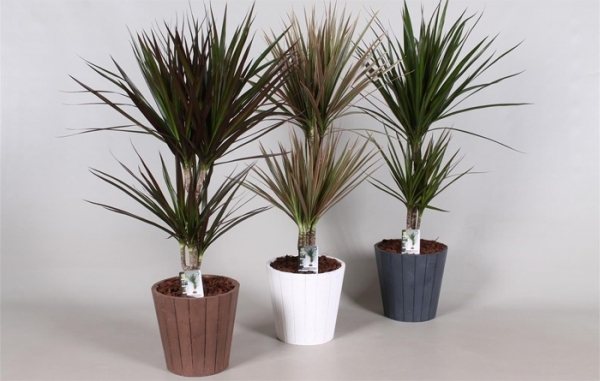

Dracaena Fragrant - This is one of the most popular types grown in a home environment. This Dracaena is called fragrant due to its flowers with a strong scent. However, this plant hardly blooms in the room. The leaves of Fragrant Dracaena are long, curved and hang down. This is a fairly large species, the height of which can reach 6 meters.
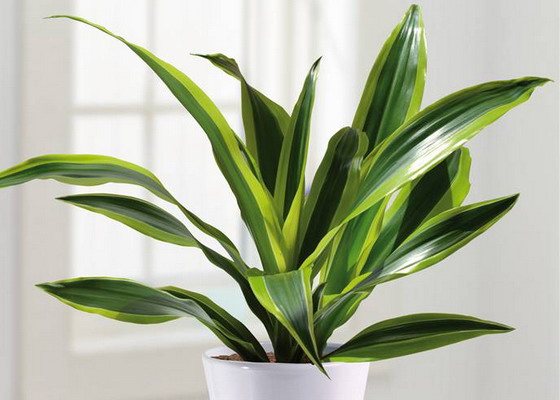

What does the deremskaya dracaena look like, which family does it belong to
Dracaena deremenskaya (Dracaena deremensis) is a perennial evergreen plant that belongs to the Agave family. This shrub has a trunk without side branches, on which leaves are densely located. The plant resembles a bunch of foliage growing on the ground. However, as it grows, its trunk can stretch out, and the crown becomes like a palm tree. The leaves are xiphoid, light green and light-colored longitudinal veins.
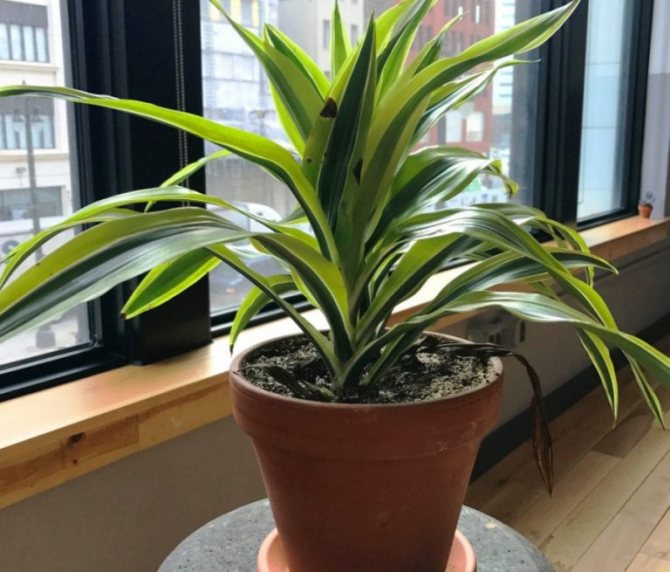

Dracaena is widely used in the design of various interiors.
Common varieties
Among the varieties of dracaena, artificially bred hybrids are especially popular. They are highly resistant to disease and frost. These varieties include: Janet Craig, White Stripe (White Stripe), Varneski and Lemon Lime.
Healing properties
Dracaena deremensis has the following healing properties:
- improves health and relieves headaches, purifies the air in the room;
- relieves stress and nervous conditions;
- boosts immunity.
Briefly about the history of appearance
The shrub grows in its natural environment in Africa and East Asia, where it has long been cultivated as a garden plant. In the middle and northern latitudes, dracaena is grown in houses and apartments.
Interesting Facts
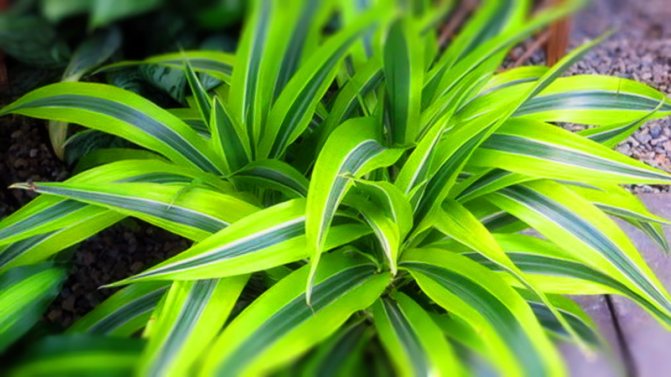

- Literally translated, the word "Dracena" is translated as "female dragon." The second most popular plant name is the dragon tree.
- According to some beliefs, dracaena grew up on the burial site of the last dragon on earth (hence the name). It is believed that the sap of the plant has a miraculous effect and is able to heal from many diseases.
- According to the legend of the Indians, the dracaena grew out of an ordinary stick stuck into the ground. The leader of the Indians promised the warrior in love with his daughter to consent to the marriage only if leaves emerge from the stick. And so it happened on the fifth day. Hence the belief was born - a cut piece of a dracaena's wooden trunk brings good luck in love.
- Since ancient times, dracaena juice, a resin that quickly hardens in air, had special properties. They say that the famous Stradivarius used this resin to process his violins. The master believed that the special resonance of his musical instruments was precisely the merit of this resin.
- The ancient Indians used the bark of the tree to make shields. The sap of the plant in India was previously used as an antiseptic. And in Spain, wood was actively used in shipbuilding.
- The largest known dracaena grew on the island of Tenerife. In 1975, she reached 14 meters in trunk girth, and her age at that time was, according to various sources, from 250 to 365 years!
Features of caring for dracaena derem house
Dracaena deremskaya care at home is simple, which makes the flower in demand in home floriculture.
Temperature
Dracaena - species of Marginat, Derem, Fragrant, Massangeana
Caring for dracaena correctly means maintaining a constant temperature. In summer, it should be in the range from 21-24 ℃ above zero, with the arrival of autumn it is gradually reduced to 16-19 ℃.
Lighting
Lighting should be diffused, so it is better to place the pot in partial shade or on the western and eastern windows of the premises.
Important! In the summer sunny period, the flower should not be allowed to stay under the sun for a long time, otherwise burns will appear on the sheets.
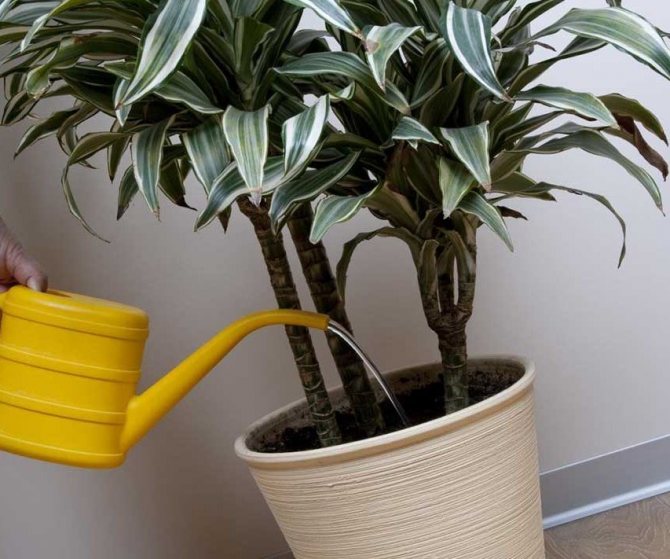

The shrub is watered often and abundantly.
Watering
Watering the plant is recommended at a frequency of 2 times a week. If excess moisture accumulates in the pan, it must be drained. Water for irrigation should be at room temperature and not contain harmful impurities.
Spraying
The shrub requires daily spraying, once a week it is put under the shower to clear all hard-to-reach places of dirt.
Humidity
Dry air provokes drying of dracaena foliage, therefore, the humidity in the room should be at least 40% all year round.
Priming
The growing soil must be constantly loose and moist. It is worth maintaining the pH level in the range of 5.5-6.
Note! Don't forget about nutrients. Fertilizers should be periodically applied to the soil.
Top dressing
You need to take care of the bush regularly, feed it. It is advisable to fertilize once every 2 weeks. For this, ordinary superphosphate or nitrate is used.It is also possible to use special complex mineral preparations: Fasco, Agricola or Stimul.
The choice of material from which the flowerpot is made
Some growers are sure that dracaena must be planted in a clay pot. In fact, you can use both ceramics with clay and plastic, the main thing is to take into account the basic requirements that the flowerpot must meet:
- Clay or ceramic pot. More suitable for young flowers, since it is more resistant than plastic. At the bottom of the flowerpot there should be drainage holes - one large or several smaller ones, so that excess moisture passes through them well and does not stagnate.
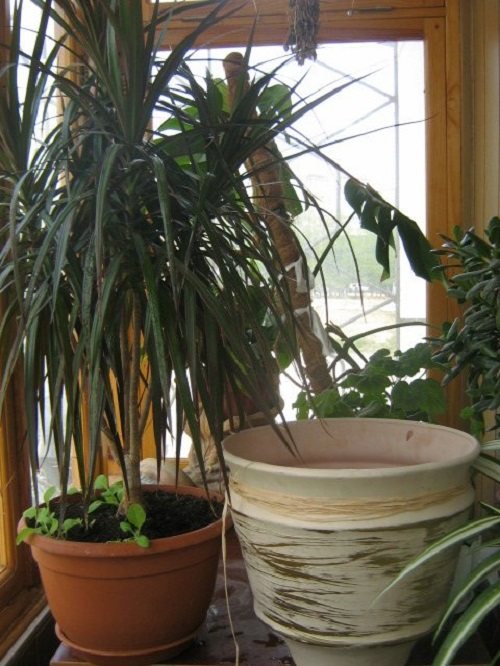

- Plastic pot. It must be made of durable material so that it does not sag to the sides and the bottom does not fall out. Drainage holes are required.
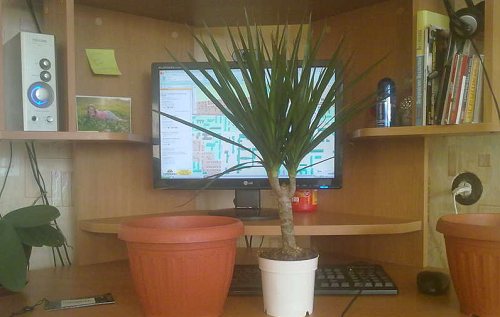

Features of care in winter, dormant period
Dracaena - home care and growing in a pot
During the rest period, almost all care measures are reduced. Watering is carried out only when absolutely necessary, and feeding is stopped altogether. Occasionally you need to spray the plant, since in winter, due to heating, the air in the room becomes dry.
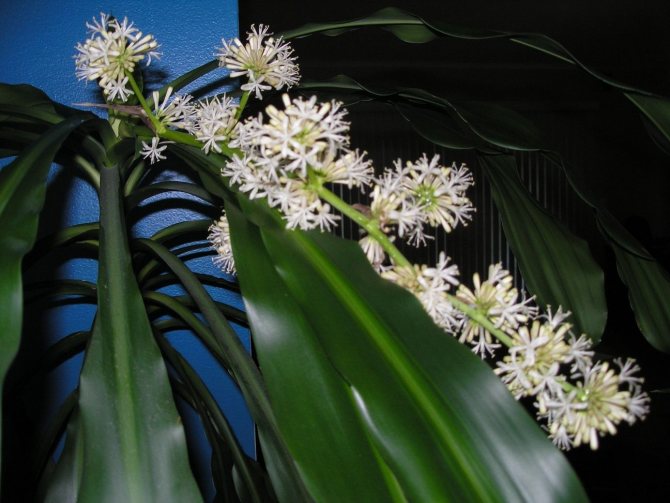

Dracaena blooms are rare
When and how it blooms
Dracaena Marginata - how to plant and care
In indoor conditions, it blooms no more than once every 8-11 years.
Types of flowers
The flowers are small - from 1 to 3 centimeters in diameter. The petals are white. During flowering, an unpleasant odor emanates from the buds.
Flower shapes
Small buds are located on the inflorescences in the form of a brush. A long peduncle has 10 to 20 flowers.
Flowering period
The plant practically does not bloom, which is why the period of blooming of its buds can fall for any period of time during the growing season.
Views
The genus Dracaena includes many species, most of which grow in the tropics of Africa and Asia. Domestic plants are represented by the following varieties:
| View | Signs | Features of the |
| Marginata | Height up to five meters; long narrow leaf with a sharp end; sometimes with red parallel stripes (bicolor). | Unpretentious, no special care requirements. |
| Fragrant (scented) | Large, rich green shade with a pale transverse stripe. | Frost-resistant, flowers have a pleasant aroma of fresh hay. |
| Sanderian | The branching trunk resembles a curved bamboo, the height is up to a meter. Light olive color. | A warm room and a cramped pot are needed. |
| The Dragon | Up to one and a half meters; large, long, sharp leaves that turn pink under excessive light. | Light sensitive. |
| Godsef | Ovate, with a bright spotted pattern. | Resistant to temperature changes. |
| Massangeana | Bright saturated variety, large leaves, trunk up to six meters. | Lighter than others, it tolerates abundant lighting. |
| Deremskaya | Many colors and shades, reaching one and a half meters. | Slowly growing. |
How dracaena deremskaya reproduces
Dracaena can be propagated in various ways.
Germinating seeds
A complex breeding method that is practically not used at home. Soak the seeds in saline and plant them 1 centimeter deep in a nutrient medium. To create greenhouse conditions, the box is covered with foil.
Rooting cuttings
To propagate the dracaena, the cutting is cut from the stem. The length of the trim should be between 7 and 11 centimeters. You can place it vertically in the substrate or lay it horizontally, slightly burying it at one end into the ground. After that, the soil is moistened and covered with a film.
Important! Every 4 days, the stem cutting is sprayed with a spray bottle.
Air layering
The extreme stems are tilted to the ground and buried in the ground, leaving the top above the ground. For stability, fix with a bracket and watered thoroughly.After a month, the layers will take root and can be cut off from the main bush.
Landing
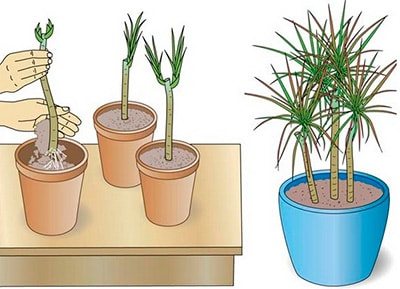

The flower can be planted with seeds. To do this, they are soaked in any growth stimulant at a temperature of +32 degrees, and kept for about a day.
Seeds are planted in loose and nutritious soil, watered with warm water and placed in a place where the temperature is high enough.
You can put the pot near the heating devices, but in this case you need to ensure that the soil does not dry out. In about a month, the seeds will begin to hatch, and when they reach 7 cm in height, they are transplanted into separate cups.
Important! Covering with glass or cling film will help retain moisture in the seed container.
Transfer
It is recommended to transplant the dracaena every 3 years, and every year it is imperative to change the top layer of earth in the pot. This should be done in the spring in a larger pot and nutritious substrate. For good drainage, a layer of expanded clay or small brick chips is covered at the bottom of the container, and the substrate is mixed together with river sand.
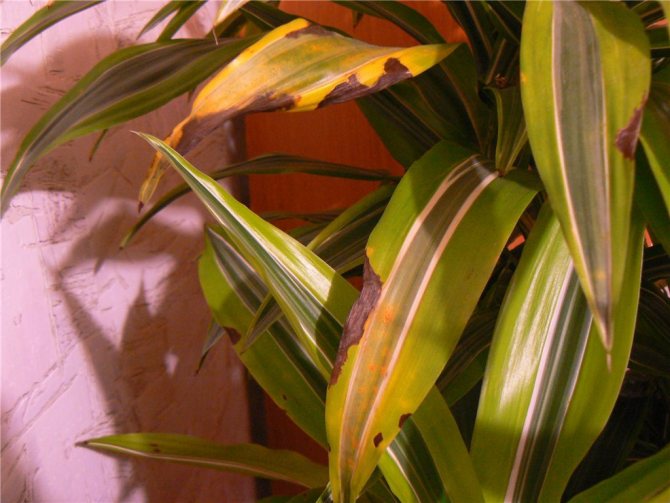

Drying of the leaf plates of the bush
Answers to popular questions
Why do leaves dry?
If the lower leaves dry up and the flower sheds them, this natural aging of the foliage. If the tips of the leaf plates dry out, this indicates dry air.
When does it bloom?
Dracaena will bloom with regular mineral fertilizing and proper care.
Why do leaf plates turn black?
This suggests that the flower has problems with the root system. Therefore, it dries out excess leaves. To help her, they remove it and put it in water to build up the root mass.
Is it possible to plant 2-3 Dracaena growths in one container?
It is possible, but at the same time they will look beautiful if they are of different heights. Since if the tops of the heads are at the same height, they are able to oppress each other.
Possible growing problems and diseases
Dracaena deremskaya is a species that is not highly resistant to diseases, moreover, it is often affected by insect pests.
Drops buds and leaves
Leaves droop and begin to fall off due to lack of moisture and nutrients in the soil. It is worth regularly feeding and watering the plant.
Leaves turn pale
The bush begins to fade when it lacks fertilizers and sunlight. The lack of iron is especially affected, which is solved by spraying the bush with a solution of ferrous sulfate.
The tips of the leaves dry
The edges of the leaf plates will dry out due to prolonged exposure to the bright sun. On hot sunny days, it is worth removing the pot with dracaena from the window deep into the room.
The lower leaves fall
This is how the plant behaves after hypothermia or watering with cold water. Do not allow a sharp drop in temperature, since the plant is thermophilic.
Pests
The following pests cause particular problems to the bush:
- scale insect - the leaves begin to turn black and wither;
- thrips - white dots appear on the front side of the leaves, and the insects themselves are located on the back in the form of black dots;
- spider mite - braids the plates and stems with a thin cobweb, sucks the juices out of them.
Other problems
If dry spots appear on the leaves, then the plant has received a sunburn. Do not water it during the daytime in sunny weather, and leave it in direct sunlight.
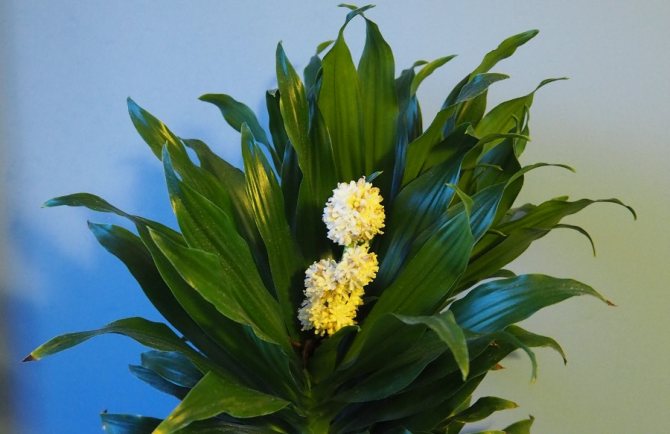

Blooming dracaena is a good omen
Reproduction
Dracena is propagated by:
- Cherenkov;
- Layers;
- Seed.
Cuttings are a cut off top and can be put into water for propagation with the addition of activated carbon. After a while, roots form on the petiole and it is ready for planting.
Layering is when small shoots appear on a cut trunk. And when their number exceeds 4 pieces, they are grown and cut for reproduction. The seeds can be purchased at a specialized store and grown into a beautiful Dracaena.


